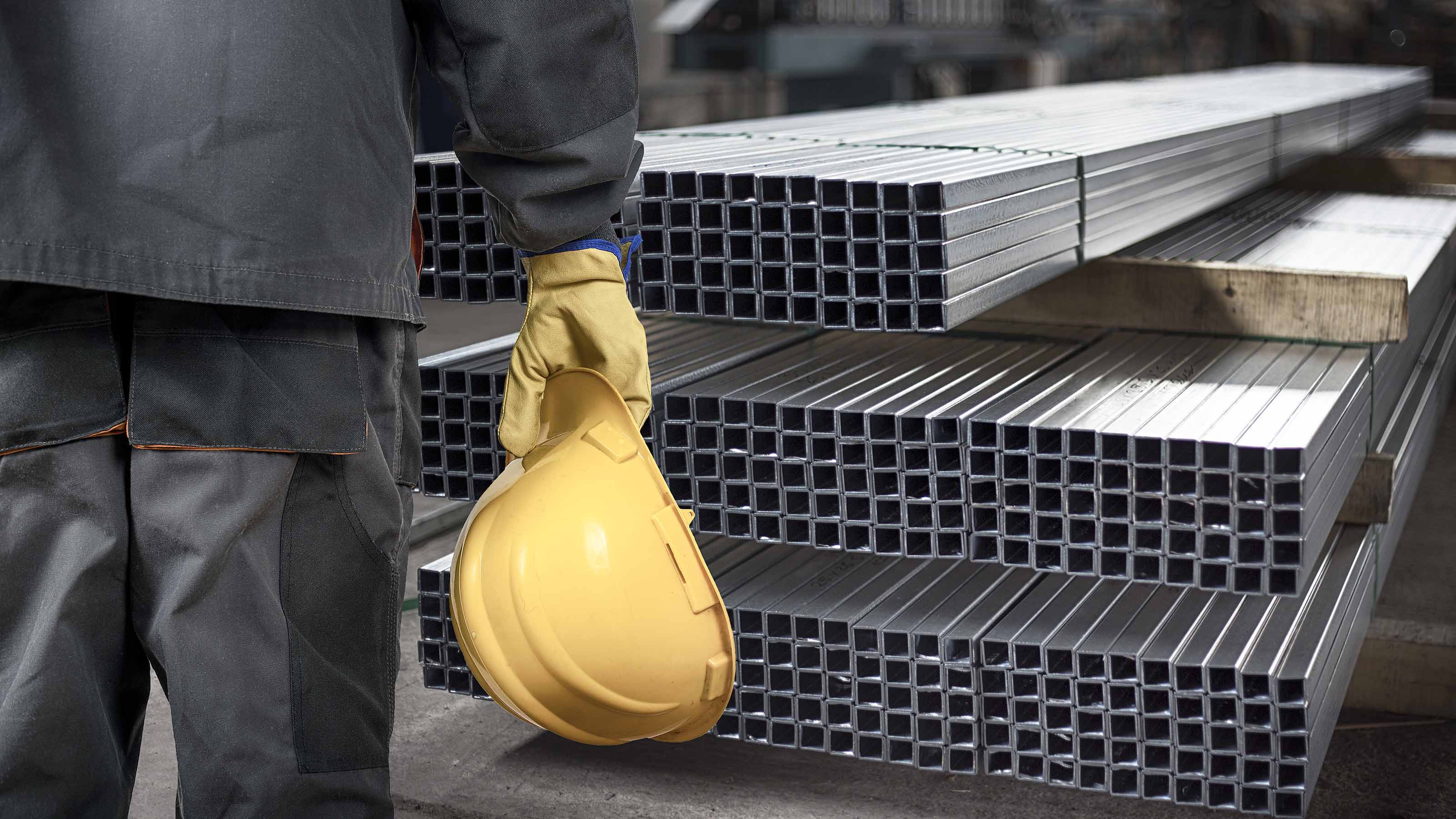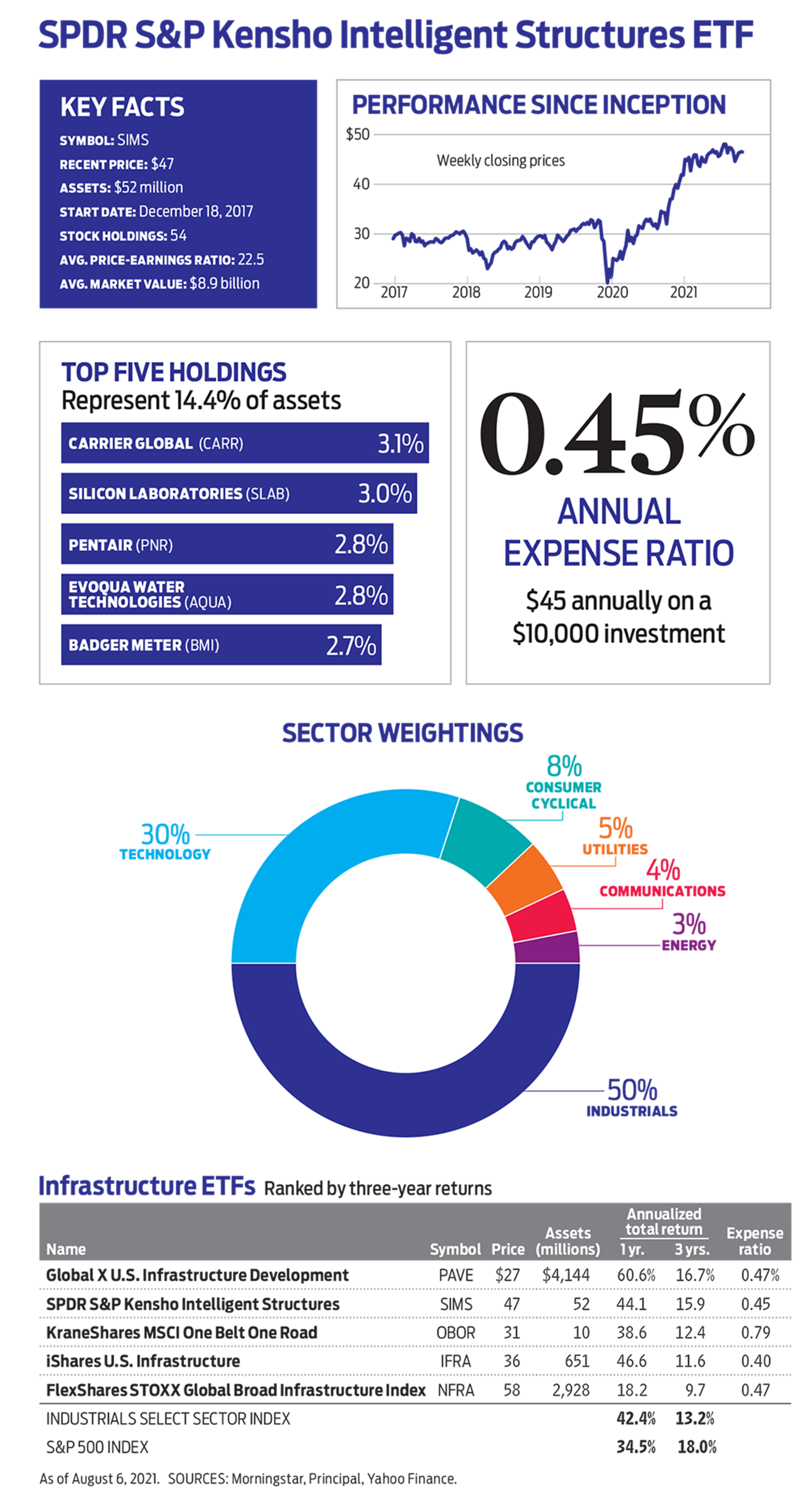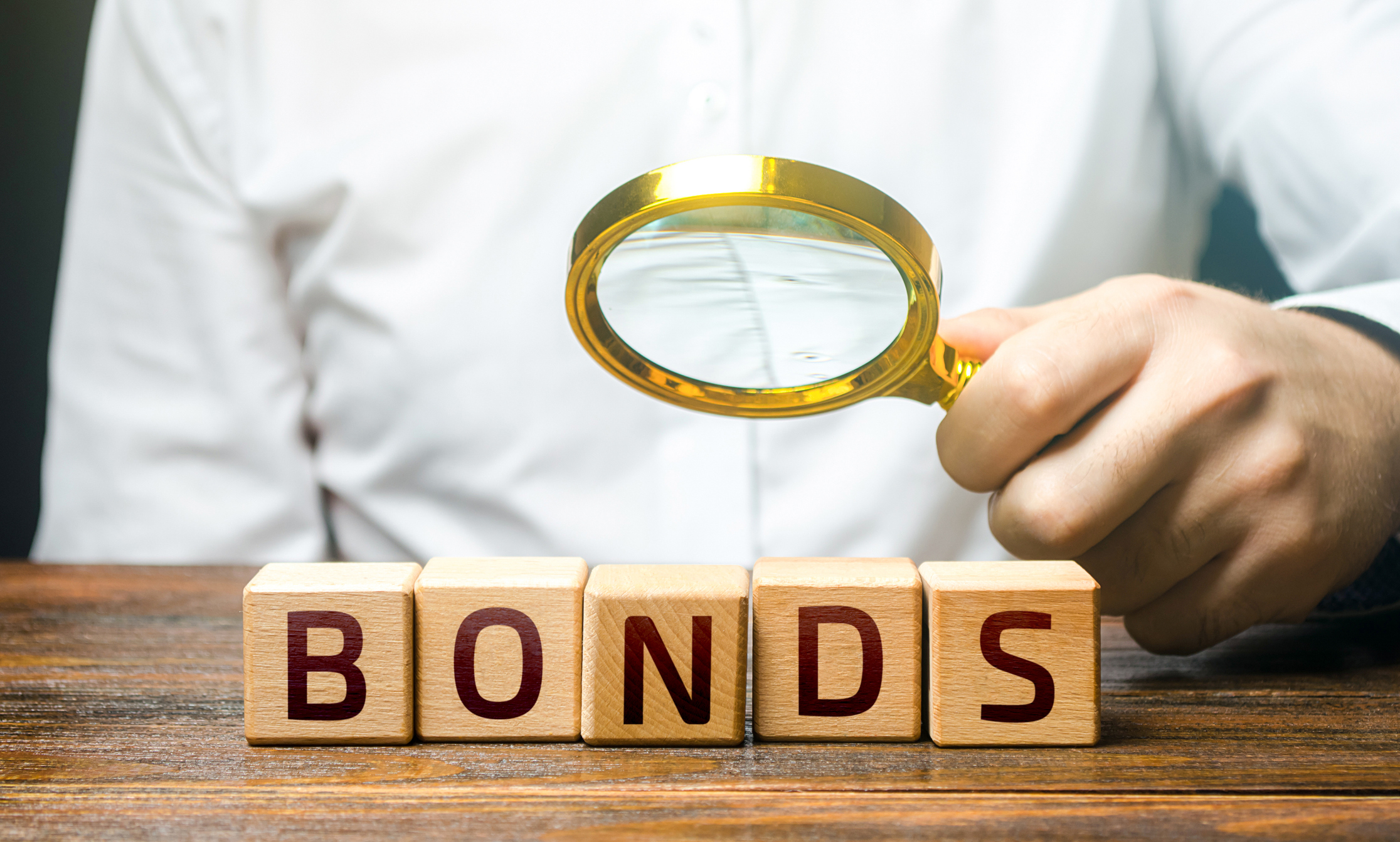A Fund for Betting on Infrastructure
The SPDR S&P Kensho Intelligent Structures ETF invests in both industrials firms and new technologies for clean energy.


Obstacles remain, but a $1 trillion infrastructure bill moved closer to becoming a law when the Senate approved it in early August after weeks of wrangling. The Bipartisan Infrastructure Investment and Jobs Act would grant $550 billion in federal funds for the country's roads, bridges, rail, transit, water and other structures.
Clean energy and new technologies are also a key focus. More than $70 billion would fund upgrades for the country's power infrastructure and boost renewable-energy use. The bill also sets $65 billion aside to build a broadband network so more Americans have access to reliable high-speed internet service; another $7.5 billion would set up a national system of electric-vehicle chargers.
Infrastructure fund SPDR S&P Kensho Intelligent Structures (SIMS) invests about half of its assets in shares of industrials firms. But it also focuses on the kinds of technology that the infrastructure bill is big on.
From just $107.88 $24.99 for Kiplinger Personal Finance
Become a smarter, better informed investor. Subscribe from just $107.88 $24.99, plus get up to 4 Special Issues

Sign up for Kiplinger’s Free Newsletters
Profit and prosper with the best of expert advice on investing, taxes, retirement, personal finance and more - straight to your e-mail.
Profit and prosper with the best of expert advice - straight to your e-mail.
ChargePoint (CHPT), a top-20 holding in the fund, builds and operates electric-vehicle charging stations. Qorvo (QRVO), another top holding, makes radio-frequency systems that drive wireless and broadband communications. And Bloom Energy (BE) converts natural gas into electricity in a combustion-free process that is more environmentally friendly than conventional gas-fired power generation.
The infrastructure bill could stall, of course. But the recovering economy alone is a boon for funds with hefty industrials exposure. Just note that this fund's three-year record is high not only on return but also on volatility.

Profit and prosper with the best of Kiplinger's advice on investing, taxes, retirement, personal finance and much more. Delivered daily. Enter your email in the box and click Sign Me Up.

Nellie joined Kiplinger in August 2011 after a seven-year stint in Hong Kong. There, she worked for the Wall Street Journal Asia, where as lifestyle editor, she launched and edited Scene Asia, an online guide to food, wine, entertainment and the arts in Asia. Prior to that, she was an editor at Weekend Journal, the Friday lifestyle section of the Wall Street Journal Asia. Kiplinger isn't Nellie's first foray into personal finance: She has also worked at SmartMoney (rising from fact-checker to senior writer), and she was a senior editor at Money.
-
 7 Retirement Planning Trends: What They Mean for You in 2026
7 Retirement Planning Trends: What They Mean for You in 2026From government shutdowns to market swings, the past 12 months have been nothing if not eventful. The key trends can help you improve your own financial plan.
-
 What Defines Wealth? A Christmas Tale of Legacy vs Possession
What Defines Wealth? A Christmas Tale of Legacy vs PossessionThe tale of Good King Wenceslas shows that true wealth is built through generosity, relationships and the courage to act kindly no matter what.
-
 5 Moves to Ensure the Markets Work Hard for You in 2026
5 Moves to Ensure the Markets Work Hard for You in 2026After a strong 2025 in the stock market, be strategic by rebalancing, re-investing with a clear purpose and keeping a disciplined focus on your long-term goals.
-
 The Most Tax-Friendly States for Investing in 2025 (Hint: There Are Two)
The Most Tax-Friendly States for Investing in 2025 (Hint: There Are Two)State Taxes Living in one of these places could lower your 2025 investment taxes — especially if you invest in real estate.
-
 What Is AI? Artificial Intelligence 101
What Is AI? Artificial Intelligence 101Artificial intelligence has sparked huge excitement among investors and businesses, but what exactly does the term mean?
-
 The Best Tech Stocks to Buy
The Best Tech Stocks to BuyTech stocks are the market's engine of growth. But what defines a tech stock? How do you find the best ones to buy? We take a look here.
-
 Bond Basics: Zero-Coupon Bonds
Bond Basics: Zero-Coupon Bondsinvesting These investments are attractive only to a select few. Find out if they're right for you.
-
 Bond Basics: How to Reduce the Risks
Bond Basics: How to Reduce the Risksinvesting Bonds have risks you won't find in other types of investments. Find out how to spot risky bonds and how to avoid them.
-
 What's the Difference Between a Bond's Price and Value?
What's the Difference Between a Bond's Price and Value?bonds Bonds are complex. Learning about how to trade them is as important as why to trade them.
-
 Bond Basics: U.S. Agency Bonds
Bond Basics: U.S. Agency Bondsinvesting These investments are close enough to government bonds in terms of safety, but make sure you're aware of the risks.
-
 Bond Ratings and What They Mean
Bond Ratings and What They Meaninvesting Bond ratings measure the creditworthiness of your bond issuer. Understanding bond ratings can help you limit your risk and maximize your yield.